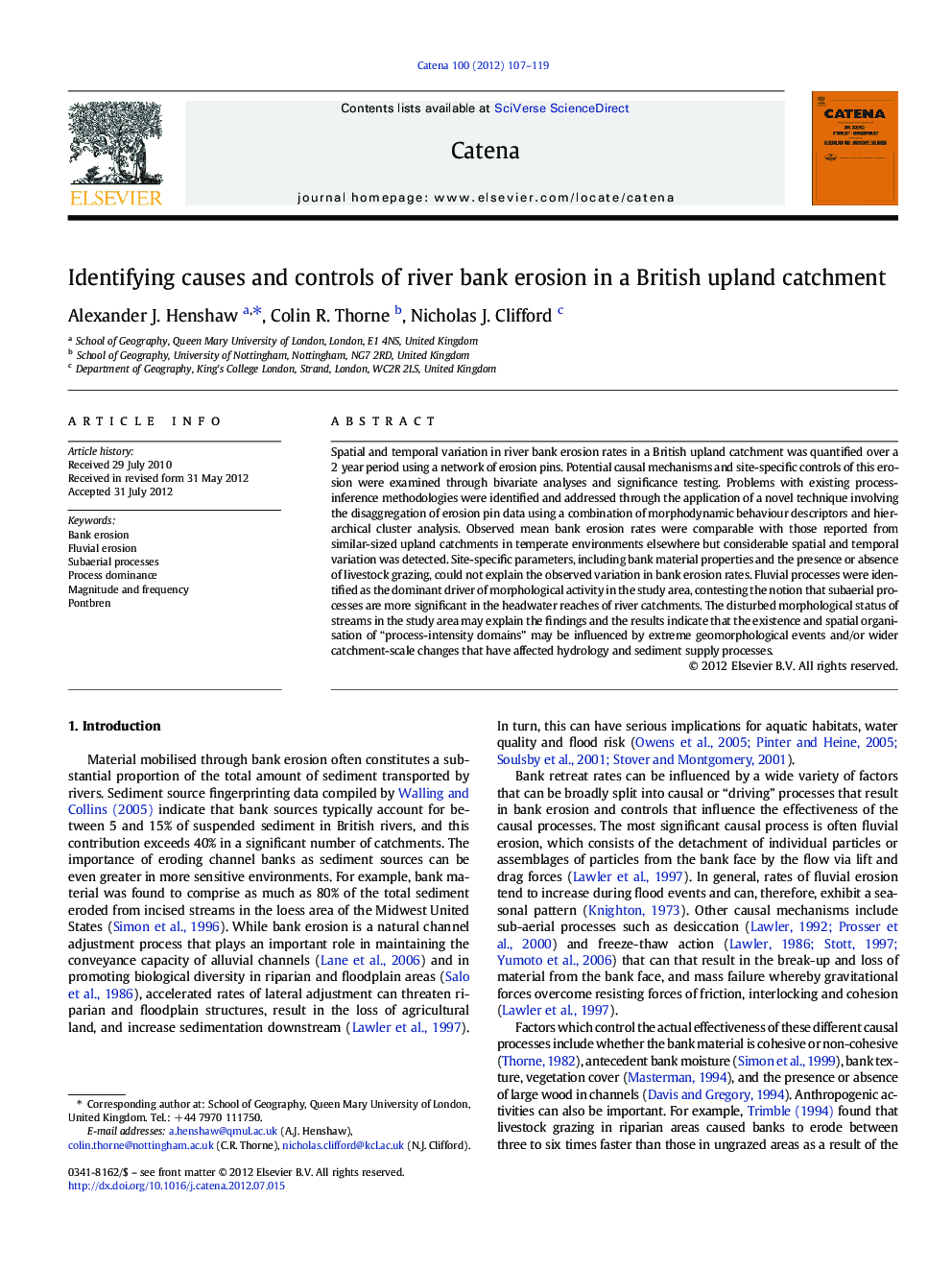| Article ID | Journal | Published Year | Pages | File Type |
|---|---|---|---|---|
| 4571727 | CATENA | 2013 | 13 Pages |
Spatial and temporal variation in river bank erosion rates in a British upland catchment was quantified over a 2 year period using a network of erosion pins. Potential causal mechanisms and site-specific controls of this erosion were examined through bivariate analyses and significance testing. Problems with existing process-inference methodologies were identified and addressed through the application of a novel technique involving the disaggregation of erosion pin data using a combination of morphodynamic behaviour descriptors and hierarchical cluster analysis. Observed mean bank erosion rates were comparable with those reported from similar-sized upland catchments in temperate environments elsewhere but considerable spatial and temporal variation was detected. Site-specific parameters, including bank material properties and the presence or absence of livestock grazing, could not explain the observed variation in bank erosion rates. Fluvial processes were identified as the dominant driver of morphological activity in the study area, contesting the notion that subaerial processes are more significant in the headwater reaches of river catchments. The disturbed morphological status of streams in the study area may explain the findings and the results indicate that the existence and spatial organisation of “process-intensity domains” may be influenced by extreme geomorphological events and/or wider catchment-scale changes that have affected hydrology and sediment supply processes.
► Fluvial processes can dominate river bank erosion in headwater reaches. ► Process dominance can vary over small spatial scales. ► Process-intensity domains are influenced by many factors. ► Process-inference can be improved using morphodynamic behaviour descriptors and HCA.
